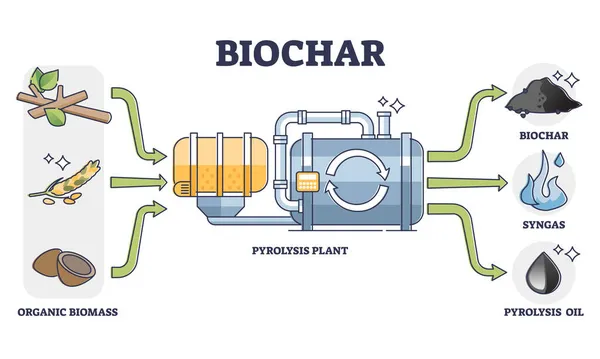Are you tired of that dull, lifeless lawn that seems to be resistant to all your attempts at reviving it? Then you might want to try biochar. This centuries-old soil amendment technique has numerous benefits including improving soil fertility, water retention, and sequestering carbon. It can also improve the health and appearance of plants, as well as reduce the need for chemical fertilizers. It’s a great technique to try when you’ve tried everything else for your lawn. Sometimes the older tricks typically end up being the better choice.
What is Biochar?
Biochar is a type of activated charcoal produced by heating organic matter, such as wood chips or agricultural waste, in the absence of oxygen through a process called pyrolysis. This porous, carbon-rich material has several potential applications, including soil amendment to improve soil quality and plant growth. That way you are not waiting around for your lawn to gain the nutrients necessary to promote growth. Using Biochar helps to enhance the soil naturally without having to add any extra toxins to your gorgeous lawn.
What Is the Best Way to Use Biochar for Your Lawn?
Using activated carbon is a straightforward process. However, it may involve a few complexities depending on your ‘soil situation’. These details can be tedious to keep up with, but they are great to follow if you want a rich, vibrant lawn. Filled with lots of plants and beautiful grass for all to see. So, here are steps and guidelines on how to use biochar for your lawn. These steps are set up in a way to ensure your lawn stays nice and healthy.
Determine the Right Biochar for Your Lawn
Biochar is made from a variety of organic materials, including wood, coconut shells, and even animal manure. Thus, depending on what it’s made of, it may have different properties suitable for different applications. For example, if you’re looking to increase water retention in your soil, choose one with fine particles, preferably smaller than the soil particles in your lawn. Conversely, you can use one with larger particles to increase water infiltration in your soil. Having these choices are great as every lawn is different depending on the area you are in and what kind of weather you will have.
Determine the Right Application Rate
The amount of activated carbon you use on your lawn comes down to several factors, including the condition of your soil, the type of activated carbon you’re using, and the plants you plan on growing. As a rule, you should ensure that your planting area has between 5% and 10% activated carbon by volume. However, you may also see results with just 2%. Therefore, it is always a good idea to carefully follow the application guidelines provided by the manufacturer and to monitor the results to ensure that you are using the optimal amount of biochar for your specific needs.
Add the Biochar to Your Soil
When applying the activated carbon to your soil, you should start by mowing your lawn as low as possible to make it easier to spread evenly over the surface. Next, use your hands or a spreader to evenly distribute the activated carbon over your lawn’s surface. While you’re at it, aim for a layer that is around 1/4 inch thick. Alternatively, you can mix it into the root zone through vertical mulching or add it to your potting mix before moving the plants to your lawn. Once the Biochar is added, you just keep up with the rest of your lawn upkeep and what it does its magic.
Ready to Give Your Lawn a Revamp?
Adding biochar to your soil can increase water retention, improve soil structure, and promote plant growth. The process is straightforward. However, you will only need to invest your time and effort in the process to get the desired results. Once these details are in order then you will see some fantastic results. Having a healthy lawn filled with beautiful plant life can make any home the perfect home. So, if you want a healthier, more vibrant lawn, consider giving it a try!















